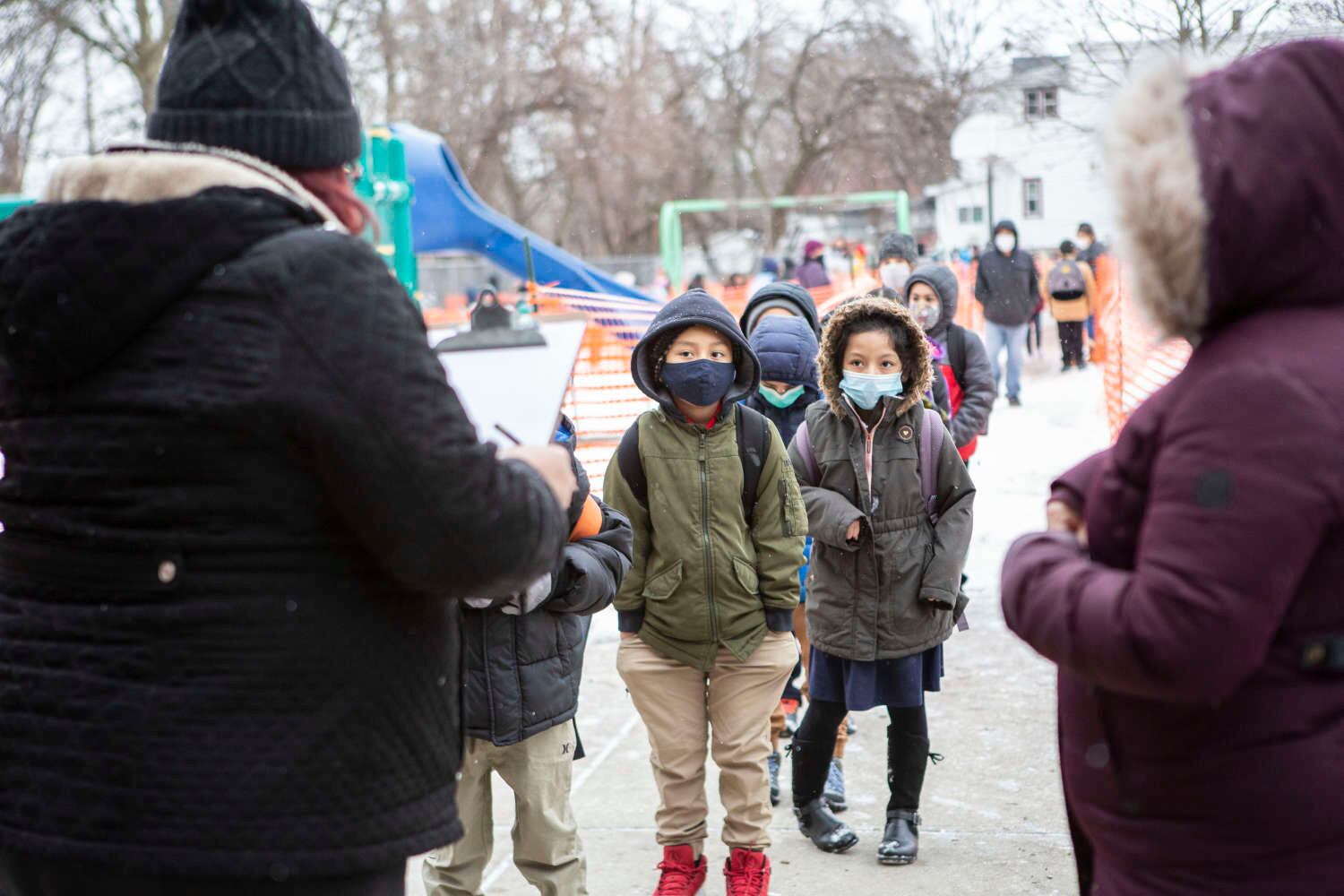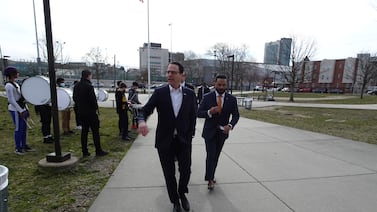School districts should jump at the opportunity for a state-subsidized inspection of air quality systems and strongly consider using upcoming federal COVID-19 aid to make upgrades this year, state leaders said this week.
Many Michigan schools lack heating, ventilation, and air conditioning systems capable of filtering COVID-19 from the air, Chalkbeat reported last week. Earlier in the pandemic, federal officials estimated that 41% of schools nationwide needed HVAC system upgrades.
Those upgrades could help reduce the spread of COVID-19 in schools as a growing number of Michigan districts reopen their classrooms. Health and education leaders in Michigan said school districts should take advantage of pandemic aid funds to make in-person learning safer.
“I would tell [schools] to invest in their HVAC system,” said Pamela Pugh, a member of the state Board of Education. Improving air circulation “is going to be huge in regard to stopping the spread of the virus in schools.”
The state is covering the cost of professional HVAC inspections for school districts to give district leaders an idea of what improvements they could make and at what cost. Michigan schools are on tap to receive $1.7 billion in federal COVID-19 relief, which must be spent over the next three years. That’s equal to roughly 10% of the state’s usual annual spending on schools, and there could be more on the way.
While the money is currently tied up in a political fight in Lansing, most of it will eventually go directly to school districts, where superintendents and state school boards will have broad discretion over how to spend it.
So far, nearly 300 schools representing 145,000 students — nearly 10% of the state population — have filled out a survey in order to participate in the state’s HVAC consultation program, and there is enough money for more schools to receive a free inspection. As of last week, the state had spent less than half of the $300,000 allocated for the inspections.
Many Michigan schools are more than 50 years old and don’t have modern air circulation systems capable of filtering the virus from the air. The state doesn’t help districts pay for their facilities, so districts are dependent on their local taxpayers to improve and maintain schools. That means many schools — especially in low-income areas — have gone without upgrades and essential maintenance.
Public health officials say that up-to-date ventilation systems are an important tool for reducing COVID-19 spread in school.
“Really good ventilation systems are helpful with some of those smaller particles,” said Natasha Bagdasarian, senior public health physician for the Michigan Department of Health and Human Services, during a state board of education meeting on Tuesday.
“Ventilation was something that was not stressed early on during the pandemic,” she added. “The thought was that if you kept people far apart there would not be any spread. We now understand that there are smaller particles that also contribute to spread, and those are aerosols.”
After learning about the state HVAC consultation program, David Hecker, president of the American Federation of Teachers Michigan, a statewide teachers union, said he hoped more districts enrolled.
“My next step is to see how we can get more school districts to take advantage of this free analysis,” Hecker said.
From there, he said district leaders should consider using federal COVID-19 aid to improve their HVAC systems.
“We understand that this state does not provide a dime for infrastructure for schools, which has to change,” he said. “But we’re in this time where there is some money available for upgrades. So this is a time to get your HVAC system looked at and figure out what experts say is needed. Then use the money that is available. Ventilation systems need to be as good as they can be.”
Even before the federal aid arrives, there’s a lot schools can do to improve air quality and prevent the spread of COVID-19, even with outdated air systems and few resources.
Opening windows and doors, increasing air circulation in existing HVAC systems, and installing portable air purifiers are all effective methods of improving air quality.
“We should be doing everything we know to do,” Pugh said. “We should focus on addressing our soft spots, strengthening our building systems, our infrastructure, getting them up to par like they should have been years ago.”







